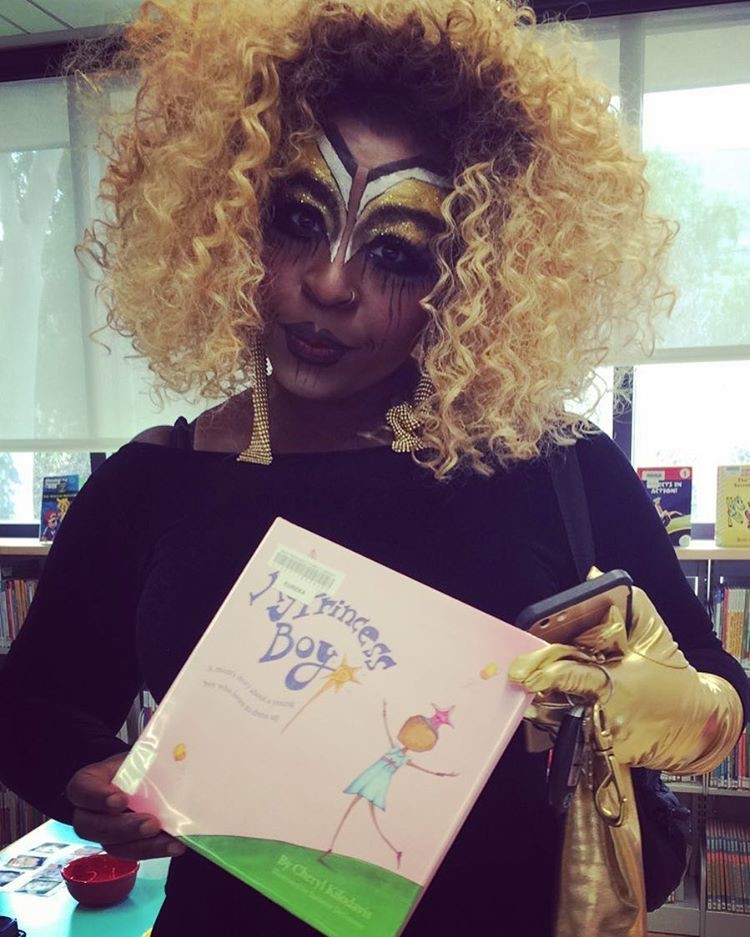A Look into How Drag Changed from an Art into A Culture
Drag has existed for centuries, though it has been referred to by many different names as it has changed with time. Certain events caused drag to go from being an art form to creating its own culture. In this blog we study how something that started in oppression has grown from a subculture hidden in cities to a supportive nationwide community.
RuPaul In Times Square, 1992

How Drag Formed
Bernadette Deron highlights much of drags history in her History of Drag Queens article which covers the more recent history that began its transformation into a community. Vaudeville was most likely the first time where drag was viewed as a form of entertainment by itself. Before that it was in Shakespearean plays, but only because of religious rites in the productions which forbid women from performing. When prohibition came about, it helped to entwine drag with gay culture, and then it was only preformed in the underground clubs and speakeasies because that was where people went to enjoy themselves. After prohibition ended, society still criminalized gay culture, so drag went from being in gay clubs to moving underground again, thus the club and ball scene era of drag began, further forming its own culture and community. Slowly, drag drew more attention until RuPaul helped bring it into more mainstream media. All of these events helped to shape drag into what it is today, along with the community around it.
The Persecution of Drag
The original separation of gay men and drag queens from popular society is explored in The Interaction of Drag Queens and Gay Men in Public and Private Spaces by Dana Berkowitz, Linda Belgrave, and Robert A. Halberstein, published in the Journal of Homosexuality Vol. 52, Issue 3-4, 2007. In their research they examine how the separation of gender and sexuality caused a shift from drag being considered something within the gay community into its own community. These distinctions caused some people within the gay community to stigmatize drag because they don’t want to be viewed in the same ways as drag artists, nor do they want to be stereotyped in the same ways. The Huffington Post lists some of these misconceptions. This separation may also have contributed to making drag a stage performance instead of an every day gender expression. This means that drag had to form its own culture outside of just the gay community, and the publicity in mainstream media helped to spark that.
The Effects of Drag
With this new support from general society, drag has expanded from bars and stages to even public libraries. Not everyone supports these freedoms though as detailed by Jennifer Stickles in her article Sparking the Ire, and Support, of a Community: When a Public Library Program Becomes Something More published in Children & Libraries: The Journal of the Association for Library Service to Children, 2018. There have been protests, numerous calls and emails, and even threats from the community to one of the libraries involved in Drag Queen Story Hour. Even though drag isn’t something specific to the gay community anymore, there is still backlash from religious communities who don’t agree with the practice. These actions against it showed that there were more people supporting the events than those protesting them, further supporting that the drag community is a community of diversity, that survives, even thrives, in the face of discrimination and persecution.
Drag Queen Displays Her Book Choice

The Support from Drag
The drag community is extremely supportive of its members as Laura J. Cole describes in her coverage of the Pulse Nightclub Shooting in Orlando. She shows how many different members of the community across the nation were affected by the shooting and their thoughts when they found out about it. The topic even came up in Rupaul’s Drag Race Season 9 as detailed in this short article and video. Along with supporting each other through the tragedy emotionally, the community raised money for the victims of the shooting and their families. This also shows the effect that such a tragedy can have on a community through the different interviews posted in Cole’s article. Drag can give people support when they can’t find it elsewhere, and that’s one of the greatest things that a community can grant.
You’re post was very interesting. I liked how you added a variety of information about drag, especially when you talked about how drag can give people support. I don’t think some people realize how important drag and that sense of family can be for people who do drag.
I really enjoyed your post i like how you went into kind of the history of drag you pointed out some stuff i dont think we touched too much on in class. I think its very insightful on how the community is treated and how they stand together as a community to support each other
I really enjoyed this post. It is interesting to me to see all the shifts drag has gone through throughout history. From being used in plays, to criminalized, and now being praised by some and protested by others. This was all very informative!